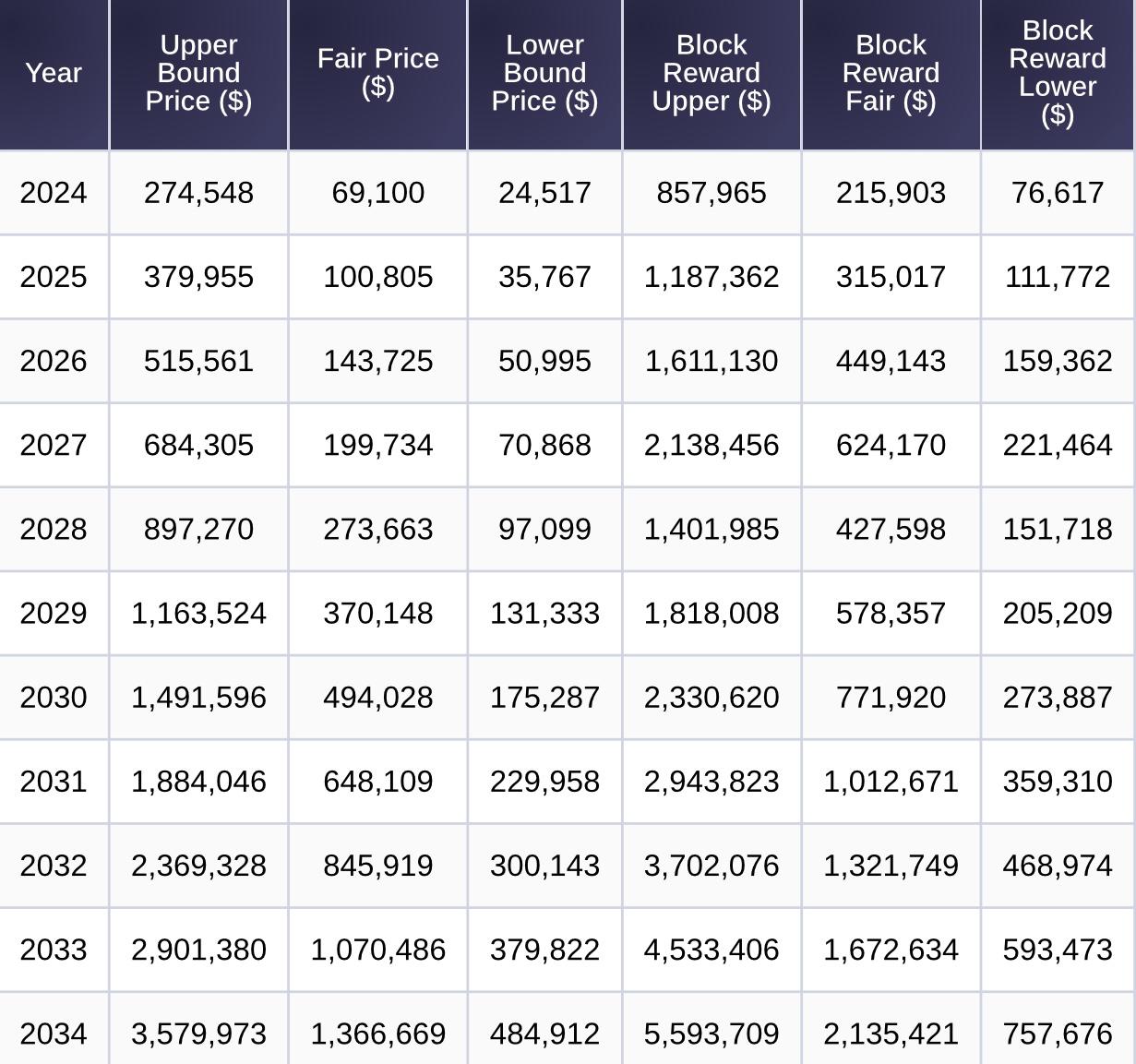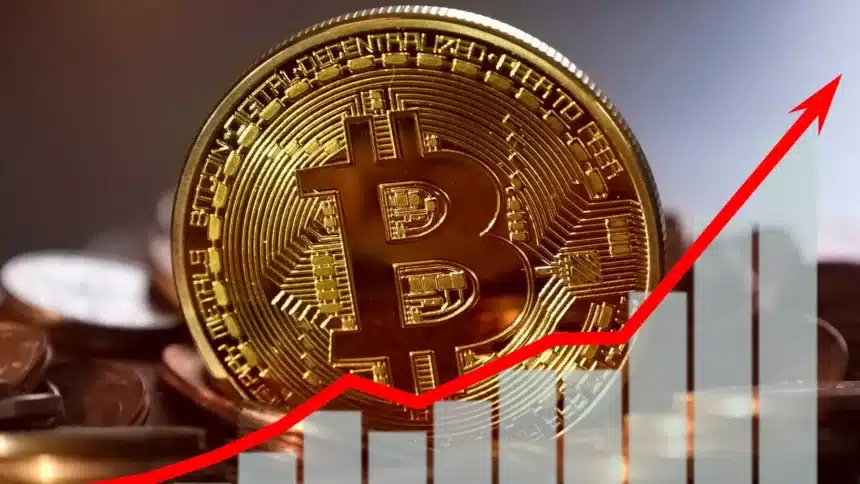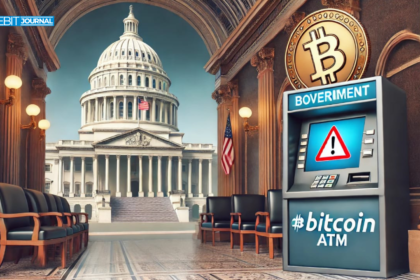Bitcoin block rewards are set to undergo significant changes over the next decade, potentially increasing by 2,900% according to recent projections. The Power Law, a mathematical model applied to Bitcoin price predictions, suggests that by 2034, block rewards could reach as high as $5.5 million. This forecast is based on the interplay between future Bitcoin halvings, price fluctuations, and fee structures.
Projected Increase in Bitcoin Block Rewards
The Power Law model, popularized by Giovanni Santostasi, has become a respected tool for predicting Bitcoin prices and block rewards. This model works by estimating Bitcoin prices within a certain range, marked by upper and lower bounds, and aligning these with a “fair price” based on historical data and trends. According to CryptoSlate, who applied the Power Law to future Bitcoin projections, the block rewards could experience a remarkable increase from their current levels.
In 2024, Bitcoin’s upper bound price is estimated to be around $274,548, which would translate to a block reward of approximately $857,965. Fast forward a decade, and the upper bound price is expected to soar to $3,579,973, bringing the block reward to a staggering $5,593,709. These projections do not account for transaction fees or changes in the hash rate, both of which could further influence the overall rewards for miners.
On the other hand, the model also provides more conservative estimates. The fair price block rewards are predicted to start at $215,903 in 2024, potentially rising to $2,135,421 by 2034. The lower bound estimates present a more cautious scenario, with rewards growing from $76,617 to $757,676 over the same period.

These projections underline the critical importance of efficiency and cost management for Bitcoin miners. As Paul Chou, a cryptocurrency analyst, stated, “Miners who fail to adapt to these changes could find themselves squeezed by rising operational costs and diminishing rewards.”
Impact of Halvings and Transaction Fees
Bitcoin block rewards are halved roughly every four years, a process known as halving. This reduction in block rewards makes the mining process increasingly dependent on transaction fees to maintain profitability. The next halving, set for 2028, will likely see Bitcoin block rewards drop below current levels, posing a significant challenge for miners.
The Power Law model suggests that while Bitcoin’s price may continue to rise, the reduced block rewards after each halving could offset these gains. As a result, miners will need to rely more heavily on transaction fees to sustain their operations.

Moreover, if the Bitcoin network’s hash rate continues to increase without a corresponding rise in prices, miners could face even tighter margins. This scenario emphasizes the need for continuous innovation in mining hardware and strategies. “The coming decade will test the resilience and adaptability of miners like never before,” commented Lydia Chan, a blockchain technology expert. “Those who can innovate will reap the rewards, while others may struggle to survive.”
Challenges and Opportunities Ahead
The anticipated rise in Bitcoin prices presents a double-edged sword for miners. While the potential for higher block rewards exists, the path to achieving these rewards will become increasingly challenging. The Power Law model’s predictions indicate that by 2034, the Bitcoin block reward could reach up to $5.5 million, a figure that is both tantalizing and daunting for the mining community.
However, the journey to these rewards will not be straightforward. The increasing difficulty in mining, coupled with the regular halving of block rewards, will require miners to constantly optimize their operations. This could involve adopting more energy-efficient hardware, improving mining techniques, or even exploring alternative revenue streams beyond block rewards and transaction fees.
As the landscape of Bitcoin mining evolves, those who can adapt to these changes will be better positioned to succeed. The Power Law model provides a roadmap for what could happen over the next decade, but it also serves as a reminder of the challenges that lie ahead.
Final Take on Bitcoin Block Rewards Prediction
Bitcoin block rewards are on track to experience significant changes over the next decade, with the Power Law model predicting potential increases of up to 2,900%. While this presents an opportunity for substantial profits, it also comes with considerable risks. Miners must navigate the challenges of increasing difficulty, regular halvings, and a growing reliance on transaction fees to maintain profitability. The future of Bitcoin mining will belong to those who can adapt and innovate in response to these evolving conditions. As the industry moves forward, the ability to manage costs and improve efficiency will be more critical than ever. Keep following TheBITJournal for latest updates on Bitcoin Block rewards.





























